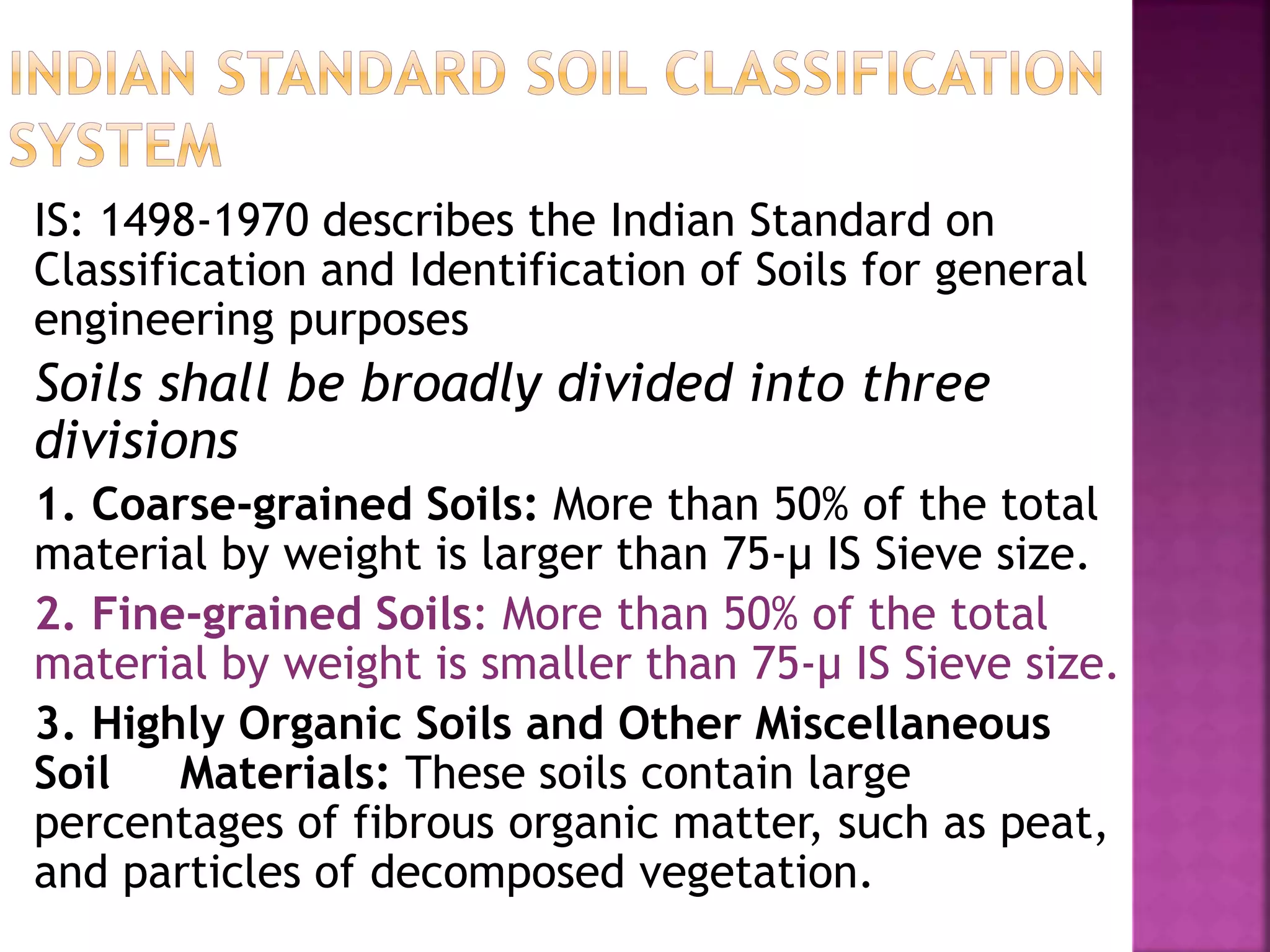This document discusses methods for classifying soils based on particle size analysis. It describes separating soils into gravel, sand, silt and clay fractions based on particle diameter size ranges. It presents equations for calculating uniformity coefficient (Cu) and curvature coefficient (Cc) to characterize soil gradation. It also summarizes the process of hydrometer analysis for determining soil particle size distribution and provides the Stokes' law equation for calculating particle settling velocity in suspension. Key criteria are outlined for classifying gravels and sands as well as fine-grained soils based on liquid limit, plasticity index and other properties in accordance with standardized soil classification systems.
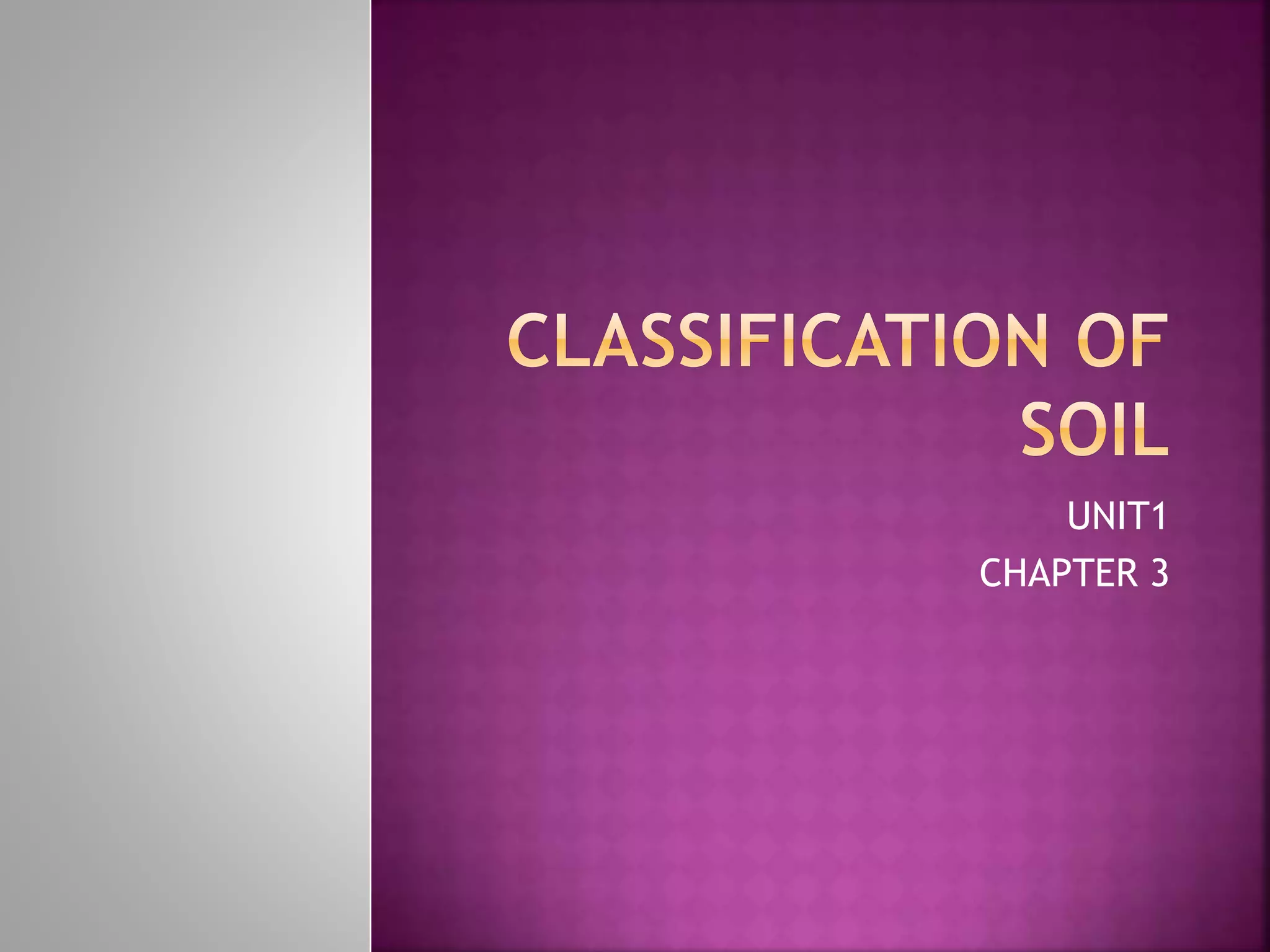



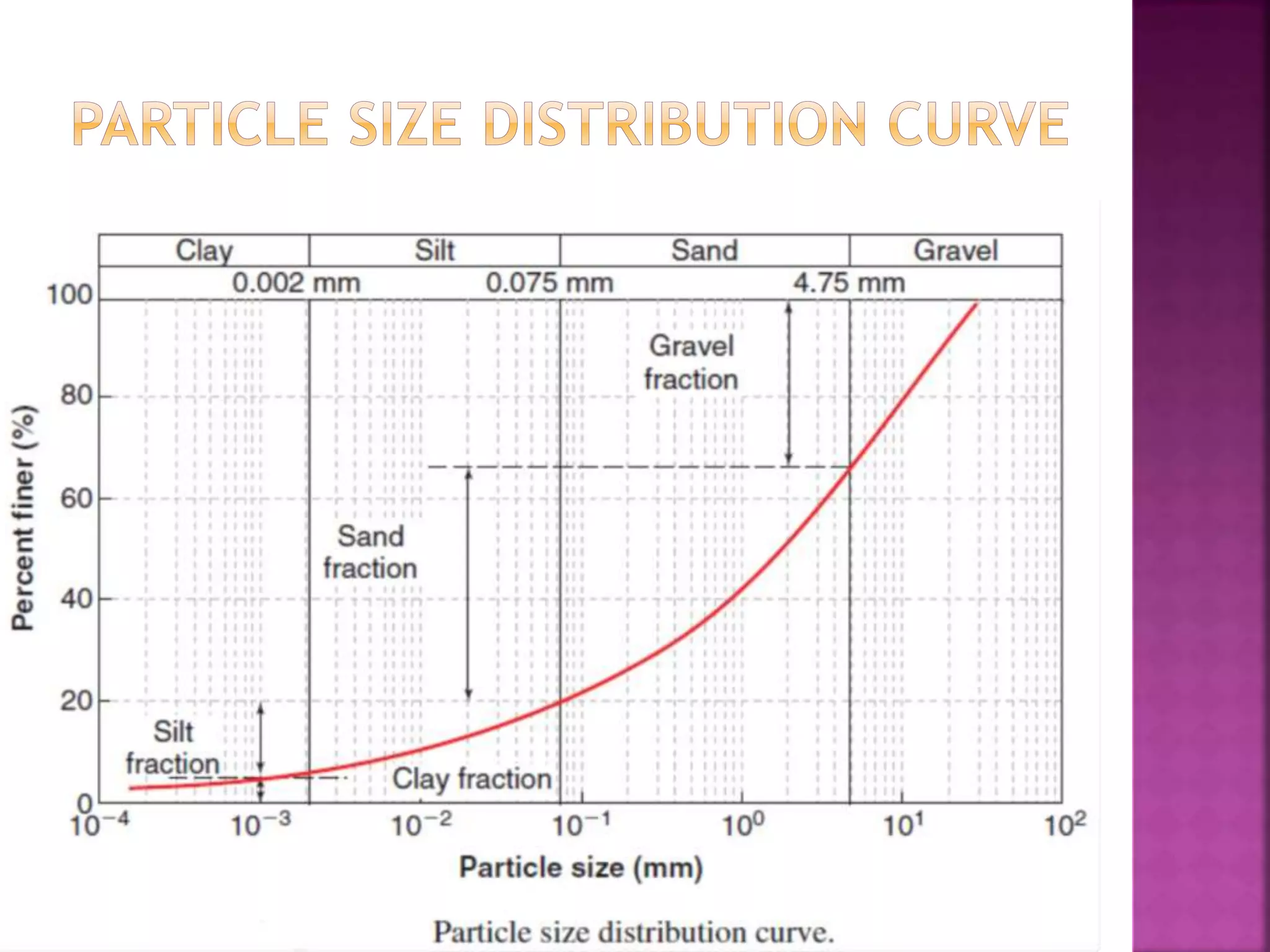

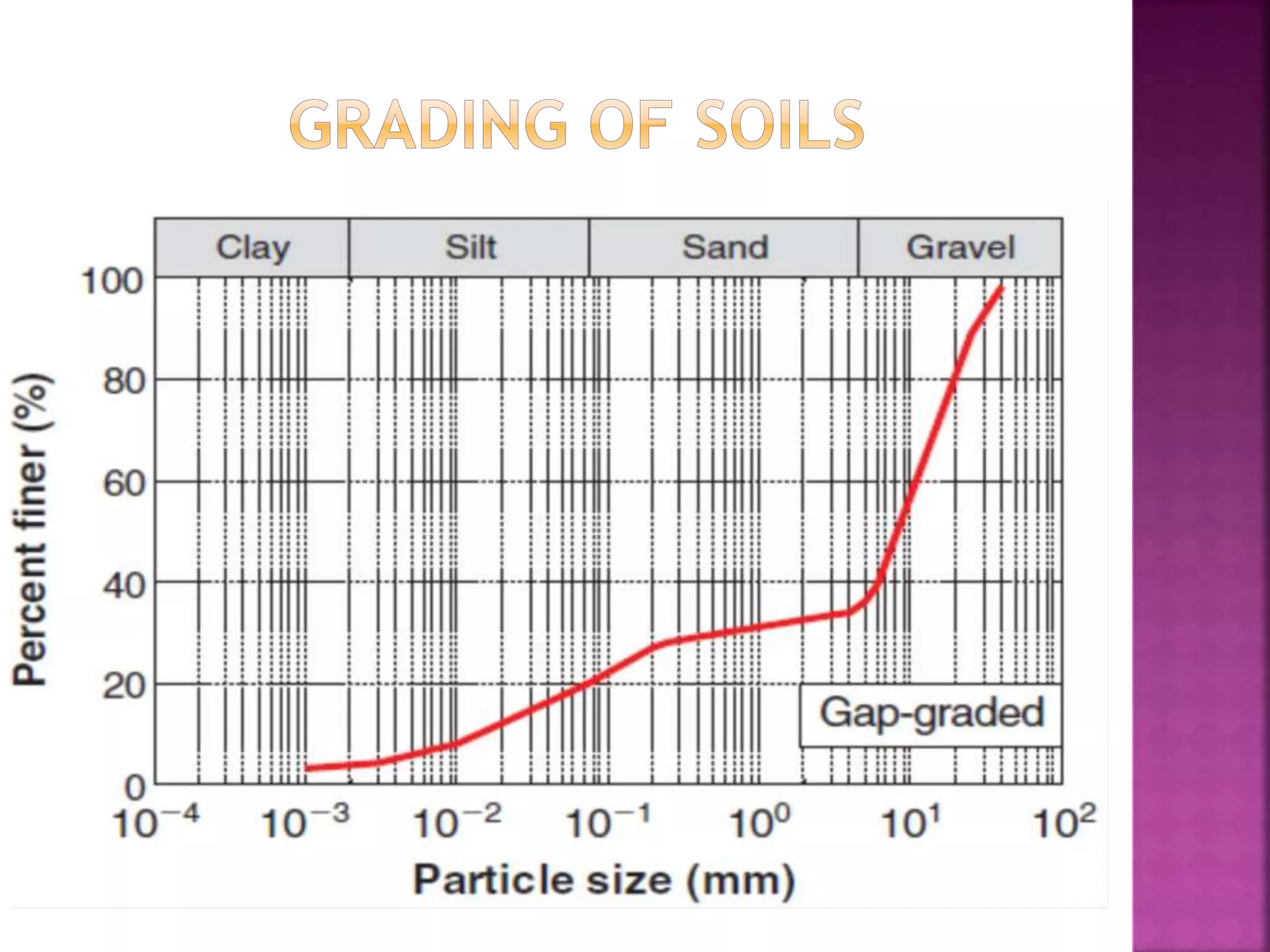
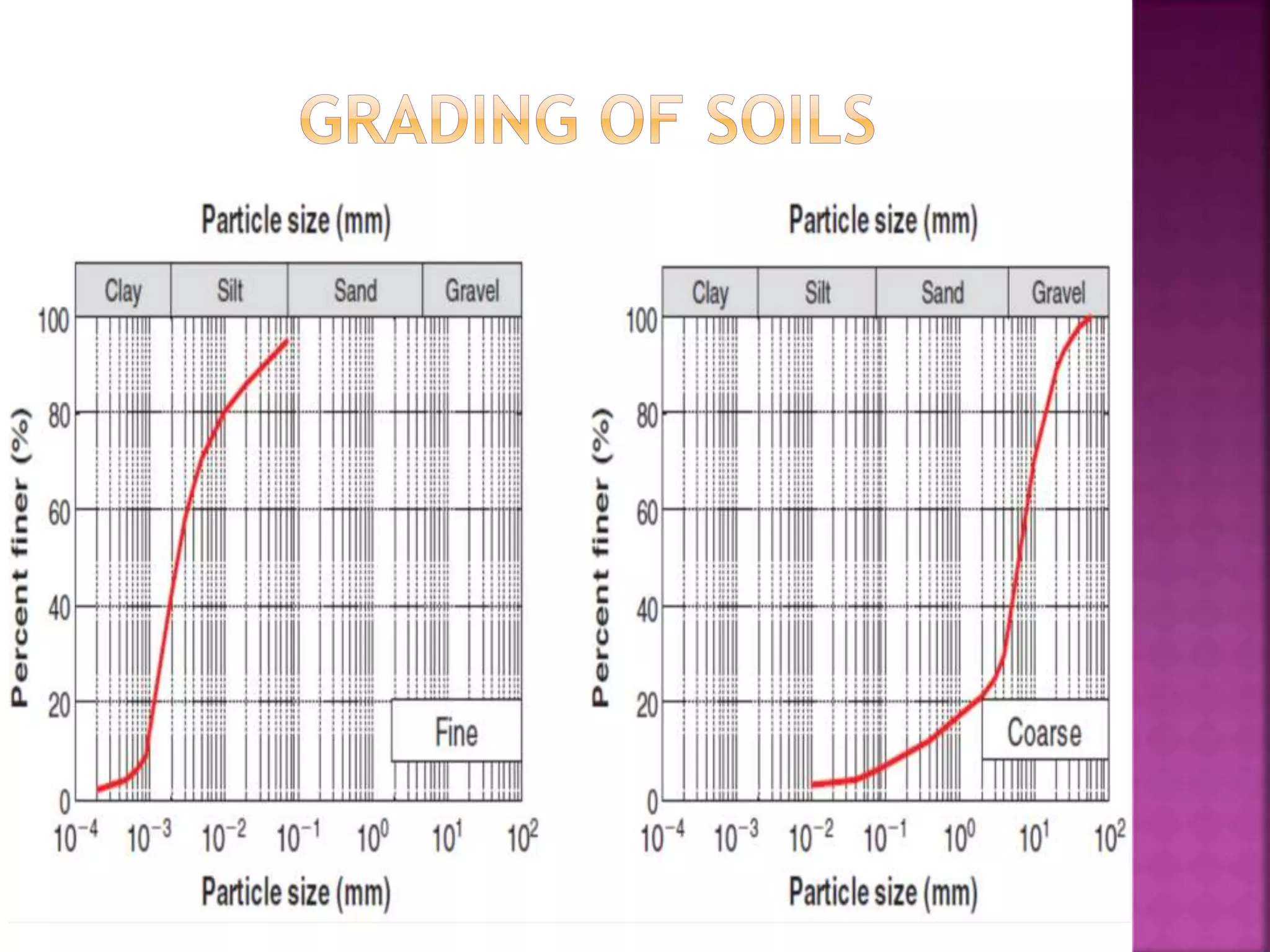




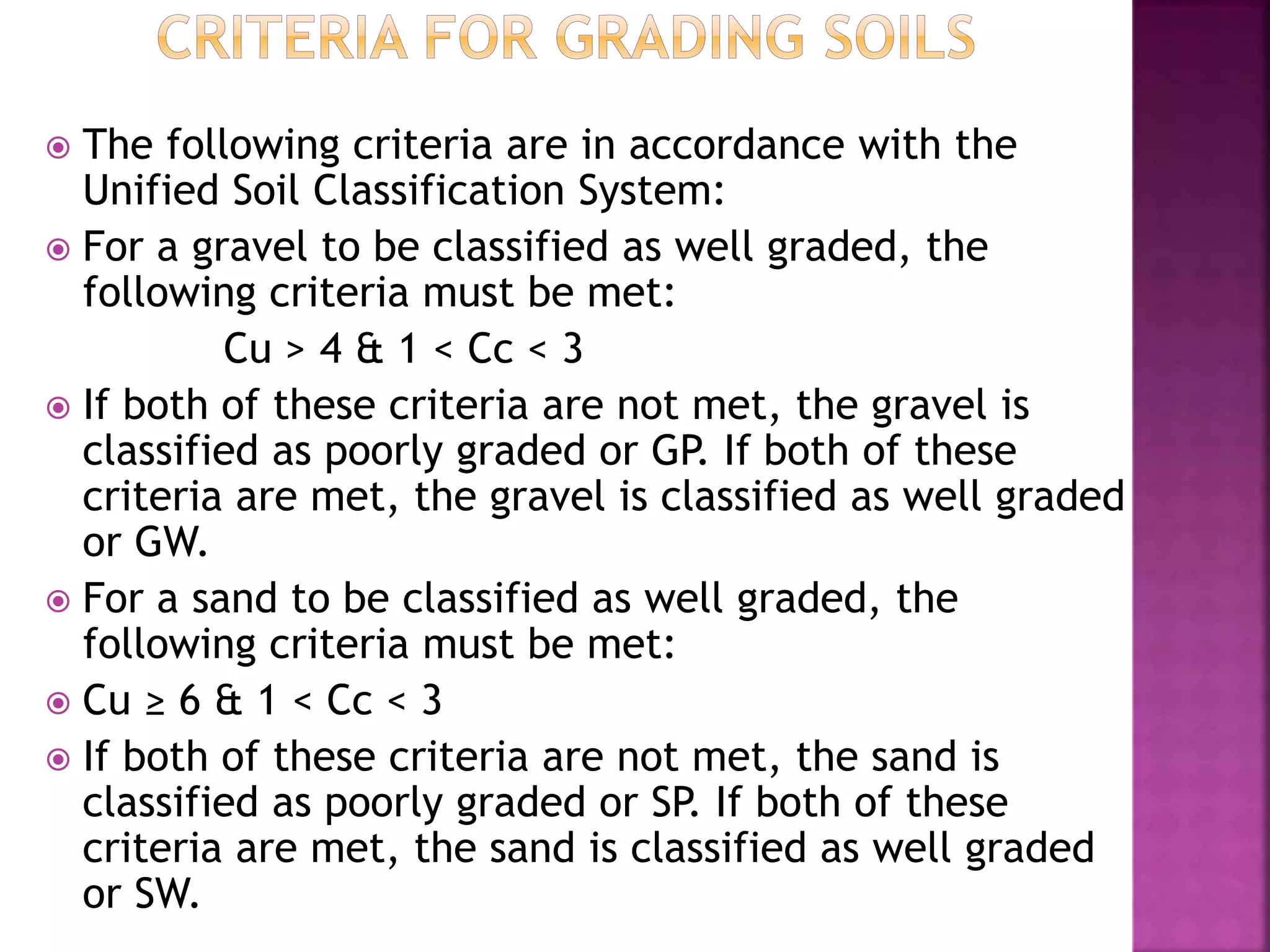
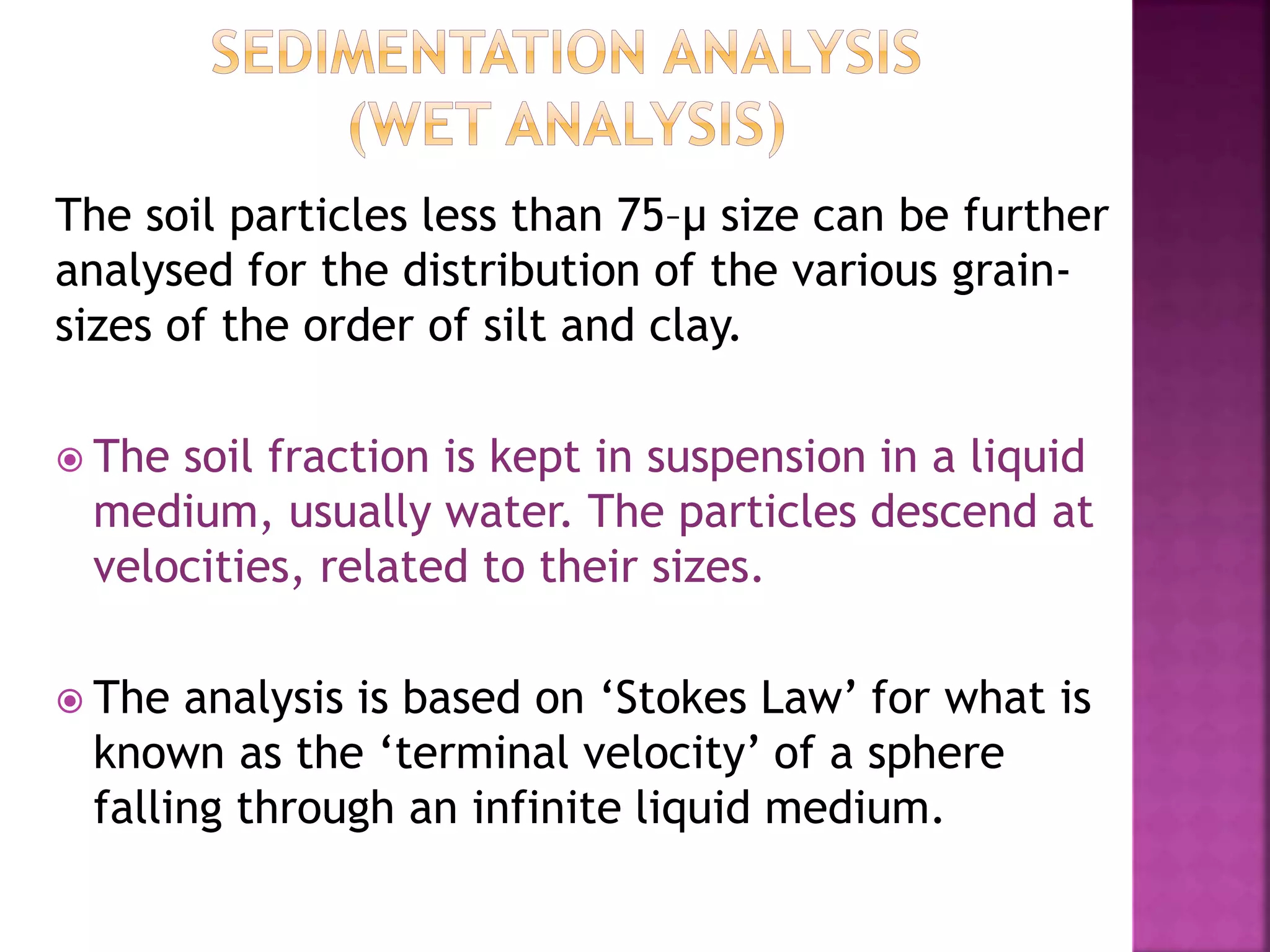

![ By Stokes’ law, the terminal velocity of the
spherical particle is given by
v =
1
18
[(γs – γL)/μL] × D2
γs = unit weight of the material of falling sphere g/cm3,
γL = unit weight of the liquid medium in g/cm3,
μL = viscosity of the liquid medium in g sec/cm2,
D = diameter of the spherical particle in cm,
V =the terminal velocity, is obtained in cm/s .](https://image.slidesharecdn.com/classificationofsoil-220719023805-aff9457b/75/CLASSIFICATION-OF-SOIL-pptx-16-2048.jpg)








